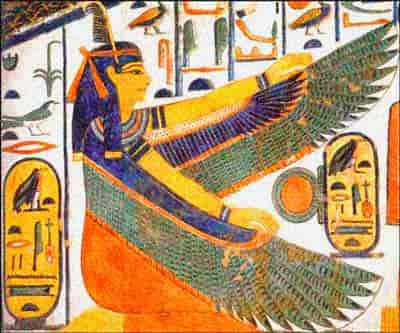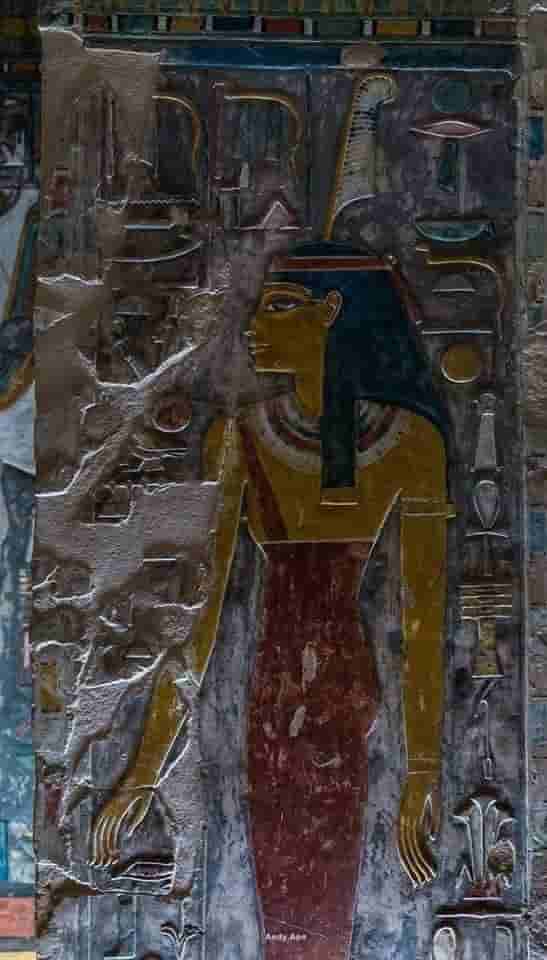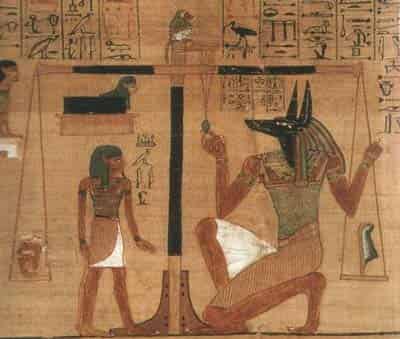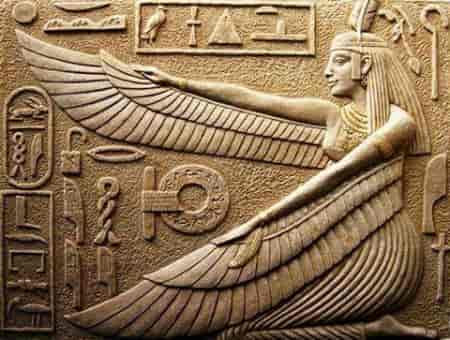Egyptian name: Maat
Representation: Woman with an ostrich feather on her head
Maat or Ma’at was the ancient Egyptian concept embodying truth, balance, order, law, morality, and justice. Maat was personified as a goddess who governed the stars, seasons, and the actions of both gods and mortals. She imposed order upon the universe in the midst of chaos during its creation. Her ideological counterpart was Isfet.
The oldest surviving records indicate that Maat represented the norm for nature and society, in both this world and the next. These beliefs date back to the Old Kingdom, with the earliest substantial examples found in the texts of the pyramids of Unas (circa 2375 BC and 2345 BC).
Later, within other traditions of the Egyptian pantheon, where most goddesses embodied her masculine aspects, her male equivalent was Thoth, sharing similar attributes.
In alternative narratives, Thoth was associated with Seshat, a lesser-known goddess of writing and measurement.
Following her role in creation and in maintaining order in the universe, her primary function in ancient Egyptian religion involved the weighing of souls (also known as the weighing of the heart) in the underworld, Duat.
Why is Ma’at important?
Maat’s pen was the measure that determined whether a soul (considered to reside in the heart) would successfully reach the paradise of the afterlife.
Pharaohs were often depicted with Maat emblems to underscore their role in upholding the laws of the creator.
In a passage from the Coffin Texts, where the demiurge describes events before creation, the primordial ocean told him, “Breathe your daughter Maat and hold her close to your nose so that your heart lives.”
In this context, Maat is almost synonymous with air; she represents the norm that governs the regularity of cosmic phenomena, societal rules, and the respect owed to them.
She was also considered the food of the gods. In daily rituals, the priest offered a figurine to the gods as sustenance, a practice mentioned in the Old Kingdom in the “Texts of the Pyramids.”
Maat is considered the daughter of Atum, and during the 18th dynasty, she is associated as the daughter of Ra.
Her final role involved guiding the solar god Ra on his journey to heaven; Maat traveled behind her father aboard the boat that carried him into the underground world each night.
Subsequently, she became Ra’s wife. Starting from the 18th Dynasty, the royal couple was likened to Ra and Maat, symbolizing the assurance of a just and orderly world through their union.
Depicted as a woman standing or sitting on her heels, adorned with a prominent ostrich feather atop her head, Maat typically holds a scepter in one hand and an ankh in the other. At times, she is portrayed with a pair of wings near her arms or with an ostrich feather as a headdress.
One of the primary places of worship dedicated to Maat was situated in Karnak, where a sanctuary was erected in her honor. The temple of Deir-el-Medina also held significance, as did a temple in Memphis. Moreover, she was venerated in numerous religious centers dedicated to other gods.
Goddess Maat and the laws
Scant literature has survived to describe the practice of ancient Egyptian law. Maat symbolized the spirit in which justice was applied rather than a detailed set of rules (as found in the Mosaic Law).
Maat epitomized the fundamental and standard values that provided the framework for dispensing justice, a duty often carried out by a Priest of Maat. In later periods, judges merely carried representations of Maat.
Subsequent scholars and philosophers also embodied concepts of literary wisdom, known as Sebayt.
These spiritual texts addressed common professional or social situations and outlined the best approaches to resolve or refer to them in the spirit of Maat.
They provided practical advice based on specific cases, resulting in few specific and general rules that could be derived from them.
During the Greek period, Egyptian laws coexisted with Greek laws. Ancient Egyptian laws safeguarded women’s rights to act independently of men and possess personal property, eventually influencing the more restrictive norms of the Greeks and Romans.
Upon the Roman conquest of Egypt, the Roman legal system prevalent throughout the Roman Empire was enforced in Egypt.




Top Image: Egyptian goddess Maat (Atelier Sommerland / Adobe Stock)






